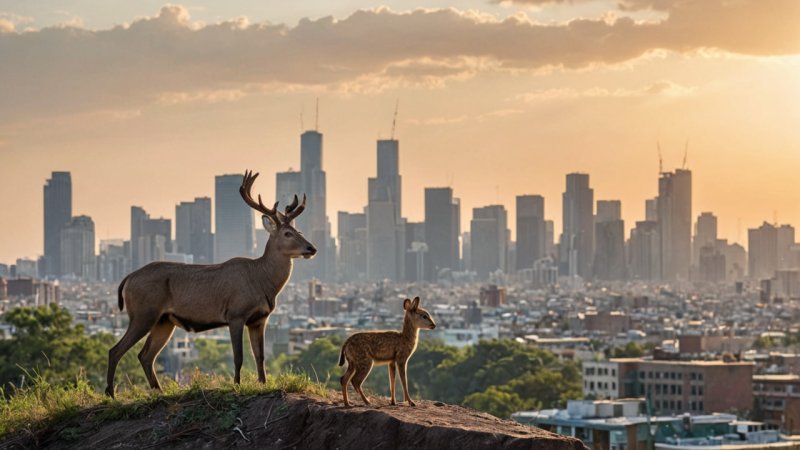As urban areas continue to grow and develop, the effects of noise pollution on local ecosystems have become a pressing concern. Wildlife, which plays a crucial role in maintaining ecological balance, is increasingly affected by the sounds of city life. This article aims to answer common questions regarding the impact of noise pollution on urban wildlife, shedding light on this important environmental issue.
What is noise pollution?
Noise pollution refers to the excessive or harmful levels of noise in the environment, often resulting from urbanization, transportation, construction, and industrial activities. It can disrupt the natural behaviors of both humans and wildlife.
How does noise pollution affect urban wildlife?
Noise pollution can have several negative impacts on urban wildlife, including:
- Disruption of Communication: Many animals rely on sound for communication, mating calls, and navigation. Noise pollution can mask these sounds, making it difficult for species to find mates or communicate effectively.
- Altered Behavior: Wildlife may change their behavior in response to high noise levels, leading to increased stress and changes in feeding and mating habits.
- Reduced Habitat Quality: Areas with high noise levels may become less attractive to wildlife, leading to decreased biodiversity.
Which species are most affected by noise pollution?
Species that rely heavily on sound, such as birds, amphibians, and certain mammals, are particularly vulnerable to noise pollution. For example, songbirds may struggle to find mates if their calls are drowned out by urban noise.
How does noise pollution impact animal health?
Noise pollution can lead to increased stress levels in animals, which may result in health issues. Chronic stress can weaken the immune system, making animals more susceptible to disease. Additionally, stress may affect reproductive success and overall survival rates.
Can noise pollution affect human health too?
Yes, noise pollution is not only detrimental to wildlife but also poses risks to human health. Prolonged exposure to high noise levels has been linked to sleep disturbances, increased stress, and cardiovascular issues among humans.
What can individuals do to reduce noise pollution?
Individuals can take several steps to minimize noise pollution in their communities:
- Advocate for Quiet Zones: Support local initiatives aimed at creating quiet zones in urban areas, such as parks and residential neighborhoods.
- Use Noise Barriers: Encourage the installation of sound barriers in high-traffic areas to reduce noise pollution.
- Be Mindful of Noise: Practice noise-reducing habits at home, such as using quieter appliances and being considerate of neighbors.
Are there any successful initiatives addressing noise pollution?
Yes, various cities worldwide have implemented successful strategies to combat noise pollution. For instance:
- Noise Mapping: Some cities use noise mapping to identify high-noise areas and develop targeted action plans.
- Community Engagement: Initiatives that involve local communities in monitoring and reducing noise pollution have proven effective in raising awareness and creating change.
How can we raise awareness about the impact of noise pollution?
Raising awareness about noise pollution can be achieved through:
- Educational Campaigns: Organizing workshops and seminars to educate the public about the effects of noise pollution on wildlife and human health.
- Social Media: Utilizing social media platforms to share information and engage with a broader audience on the importance of reducing noise pollution.
Where can I find more information on this topic?
For more information on the impact of noise pollution on urban wildlife, consider visiting environmental protection websites, wildlife conservation organizations, and academic journals focused on ecology and urban studies.
Final Thoughts: Noise pollution is a critical issue that affects not only urban wildlife but also human health and well-being. By understanding its impacts and taking action, we can create a healthier environment for all living beings. Awareness and community engagement are key to tackling this pressing problem.






